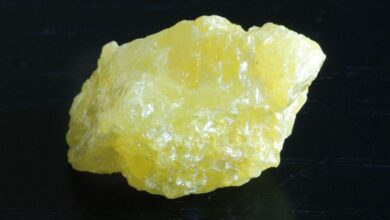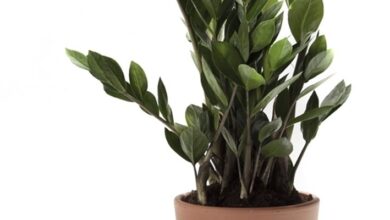How to revive a Brazilian stick?

The Palo de Brasil, also known as Palo de Agua, is a very popular plant in gardens and terraces, but also indoors, especially when living in an area where winter is cold. In fact, although you might think that a «simple» stem with green leaves cannot beautify a room much, it is precisely these characteristics that make it so attractive. In addition, if the right conditions are given, it can even flower, producing clusters of very fragrant white flowers.
But that can become a problem, because we all know that when we like something or someone a lot we want to take care of it the best we know how. And that is when our beloved plant can begin to have brown leaves, or a soft trunk. Has this happened to your copy? Then next we will tell you how to revive a Brazilian stick.
Generalities of the Brazil Stick
It is important to know the plant a little to know how to care for it. Therefore, the Palo de Brasil you should know that it is an evergreen shrub that, despite what its name says, is native to Tanzania and Zambia, in Africa. Botanists call it Dracaena fragrans, and it receives the common names of Brazilian wood, Brazilian trunk, water wood, or tree of happiness.
If planted in the ground it can reach a height of up to 6 meters, but in a pot it does not usually exceed one meter. As it grows at a fairly slow rate, it can be planted wherever you want, since even if it is grown in a container we will not have to transplant it very often.
The trunk is very thin, barely 10 centimeters thick, and rosettes of green, lanceolate leaves sprout from its end. It is common for many specimens to be planted in the same place, to achieve a more beautiful effect, and give it an exotic touch.
What are the most common problems of the Brazil Club?

Image – Wikimedia/ Forest and Kim Starr
The Palo de Brasil is a plant that, especially if it is kept indoors, can have several problems, which are:
- Brown spots on the leaves: they can appear from one day to the next when the sun shines directly or through a window, or when it has been cold.
- Yellow leaves: if they have also lost strength, it is because they are receiving too much water.
- Leaves with yellow edges and brown tips: this happens when you are thirsty, either due to insufficient watering or because the environmental humidity is very low.
- Dry ends: it may be because you need more water, you are experiencing heat or because you are near drafts (fan, air conditioning).
- Loses color: it is a plant that needs abundant light. For this reason, when it is kept indoors it is important to find a room in which there is a lot of light.
Plagues and diseases
To all this, we must add the most common pests and diseases, which are:
Red spider

Image – Wikimedia/ Gilles San Martin
The red spider is a mite of about 0.5 millimeters that attaches itself to the leaves (specifically, on the underside) to feed on them. With each sting, it leaves a small yellow spot. The leaves eventually lose shape, curl, and in severe cases dry out and fall off. It also usually produces a spider-like web, which makes it easy to identify.
Treatment: removes with acaricides.
Mealybugs

Image – Wikimedia/ Whitney Cranshaw
There are many types of mealybugs, such as the cottony mealybug or the one known as San José louse. The first looks like a cotton ball, while the other is a limpet. In any case, all of them feed on the sap of the leaves, from the underside, making them look yellow and deformed little by little, and leaving a sticky molasses that can attract the black fungus.
Treatment: if there are few mealybugs, you can remove them by hand, or with water and mild soap. But if they reappear, or if the plague has spread a lot, use better diatomaceous earth that you can buy here. It is a very effective natural insecticide. Water the plant well, and then pour the product over it.
Aphids

It is common that where there are aphids, there are also ants. The molasses that the former produce is an exquisite food for them.
These aphids are very small, barely 0.5 centimeters, and can be of different colors (yellow, green, brown, black). They have a preference for the most tender leaves, that is, the youngest so it will be in them where they will appear first. They also produce molasses, just like mealybugs, so the leaves become sticky.
Treatment: diatomaceous earth will do. Another option is to use potassium soap, neem oil or, if you are very advanced, an anti-aphid insecticide (on sale here ).
Septoria

Image – Wikimedia/ El informatico
The septoriosis is a fungus that causes the appearance of spots of brown-gray. It favors very humid environments, which is why it is very important to control risks.
Treatment: you have to cut the affected parts and treat the plant with a systemic fungicide that you can get here.
Bold or sooty mold

Image – Wikimedia/ Bidgee
The bold is an opportunistic fungus that appears when there is a plague of aphids and/ or mealybugs. It is well identified since it covers the leaves with a black layer.
Treatment: the first thing is to treat the pest. Once the plant has no aphids or mealybugs, you can clean the leaves with water and mild soap. If you want, you can treat it with a copper-based fungicide to ensure that the fungus is completely eliminated. You get it for example here.
How to revive a Brazil club step by step?
As we have seen, the Brazilian stick is a plant that can have some problems throughout its life. So what are the steps we need to take to get it back? Let’s see it:
How to recover a rotten Brazil stick or one that has suffered from excess water?
- The first thing you have to do is touch your plant. Press down on the logs and branches to see if they are soft or rotten. If so, cut to the chase, leaving those parts that are good (or apparently good), that is, hard.
- Then, remove the plant from the pot, and wrap the root ball (soil bread) with several layers of absorbent paper. If you see that the paper you put on it gets soaked quickly, throw it away and put it on again.
- Next, leave the plant with the root ball wrapped in absorbent paper in a clean and dry place, protected from direct sun, for at least 24 hours.
- The next day, remove the paper and check the humidity of the soil. If it is still very wet, wrap it again with more paper – new – and leave it there for another day.
- When it’s dry, plant it in a pot that has holes in the base with a mixture of equal parts peat and perlite (or a high-quality universal substrate, like this one ).
- Now, treat it with fungicide, because when the plant is so weak, fungi can attack it. If it also has insecticidal properties, better, like this one that they sell here.
- Finally, water. And to wait.
How to recover a dry Brazil stick?
If it is in a pot…
- If your Palo de Brasil is dry, you have to move it to an area where the air currents do not give it. This means that you should avoid putting it near a window, air conditioners, fans, and in passageways.
- Then, you have to check the humidity of the soil, in one of these ways:
- Insert a stick to the bottom, and if you see that when you extract it, it comes out practically clean, then the earth is dry.
- If when watering the soil it does not absorb water, that is, if this liquid runs to the sides and leaves the pot very quickly, then the plant will not hydrate.
- When you pick up the pot and notice that it weighs very little, it may be that it lacks water. To know this true, when you water and the soil is well soaked, weigh the pot. So you can get an idea of when to water.
- Then, you have to place the pot in a basin of water and leave it there for about 30 minutes.
- From now on, water more often. If the humidity is very low, spray the leaves with soft water daily in summer, and every 2-3 days the rest of the year. It is also highly recommended to put it in a slightly larger pot with new soil.
If it is planted in the garden…
When we have a Brazilian stick in the garden and we see that it is dry, we must protect it from direct sun, for example by putting shading mesh, as an umbrella, or planting some plants larger than it. Also, it is important to check the moisture of the soil as it may need more water.
How to recover a Brazilian club that has yellow leaves?

Image – Wikimedia/ Forest & Kim Starr
It will depend on what really happens to him: if his leaves are limp, that is, fallen, it is because he is receiving too much water; But if what happens is that it has yellow edges and brown tips, it is because it is going thirsty. Consequently, in the first case there is more space for the waterings, and in the second, on the contrary, water more.
Likewise, it is highly advisable to pay it in spring and summer so that it does not have nutritional deficiencies. A rich fertilizer such as guano well applied can help you, and a lot, to be precious, so do not hesitate to buy it from here for example.
And finally, think about transplanting it, if you have it in a pot, every 3 or 4 years, in spring to a somewhat larger one that has holes in the base. This way, it can continue to grow, something that can prevent the leaves from getting ugly.
I hope you have found the solution to the problem of your Brazil Club.




